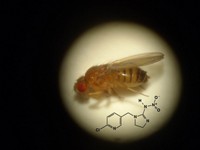Advertisement
Grab your lab coat. Let's get started
Welcome!
Welcome!
Create an account below to get 6 C&EN articles per month, receive newsletters and more - all free.
It seems this is your first time logging in online. Please enter the following information to continue.
As an ACS member you automatically get access to this site. All we need is few more details to create your reading experience.
Not you? Sign in with a different account.
Not you? Sign in with a different account.
ERROR 1
ERROR 1
ERROR 2
ERROR 2
ERROR 2
ERROR 2
ERROR 2
Password and Confirm password must match.
If you have an ACS member number, please enter it here so we can link this account to your membership. (optional)
ERROR 2
ACS values your privacy. By submitting your information, you are gaining access to C&EN and subscribing to our weekly newsletter. We use the information you provide to make your reading experience better, and we will never sell your data to third party members.
Environment
Nanoparticles Shorten Roundworms' Lives
Nanomaterials: Even at low concentrations, cerium oxide nanoparticles harm C. elegans
by Valerie Brown
March 31, 2011

Even though nanoparticles are increasingly entering the environment, scientists still have a lot to learn about their biological effects. Now Chinese researchers have found that exposure to cerium dioxide nanoparticles shortens the lifespan of the roundworm Caenorhabditis elegans (Environ. Sci. Technol., DOI: 10.1021/es103309n).
Zhiyong Zhang and colleagues from the Chinese Academy of Sciences' Institute of High Energy Physics exposed larvae of the widely used model organism C. elegans to 8.5-nanometer particles of CeO2. Nanoparticles of CeO2 have many high-tech uses, such as in catalytic converters and as polish for silicon wafers. They are also under consideration for use in eye drops and sunscreen.
Research on other nanoparticles has suggested that they can trigger oxidative stress in C. elegans. But studies on CeO2 nanoparticles have hinted that they may actually protect against cardiovascular, neurological, and radiological damage in rats, mice, and human cells in vitro, respectively. However, those studies used high concentrations of the nanoparticles. Zhang wanted to see how environmentally relevant concentrations of CeO2 nanoparticles might affect an organism's health.
The researchers raised C. elegans larvae on mats of bacteria doped with CeO2 nanoparticles at concentrations ranging from 1 to 100 nM. They then counted the surviving worms each day.
At the lowest concentration of 1 nM, the mean lifespan of the worms was 15 days. At the highest concentration of 100 nM, the worms lived 14 days. Compared to control worms' lifespan of nearly 18 days, the lifespan of worms exposed to nanoparticles decreased by 12% when averaged over all concentrations. The researchers think the shortened lifespan is related to oxidative stress.
"We never expected to find any negative effects at such a low concentration," Zhang says. This is the first study, he says, indicating adverse effects of nanoparticles in the 1- to 100-nM range.





Join the conversation
Contact the reporter
Submit a Letter to the Editor for publication
Engage with us on Twitter